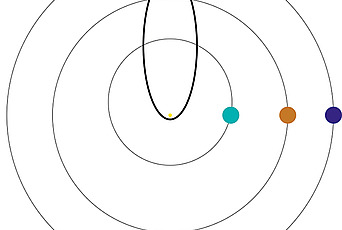
Eclipse Hunter Reveals the Science That Can Only Be Done in the Dark
On Aug. 21, a total solar eclipse will be visible from a narrow ribbon of land—the “path of totality,” which stretches across the United States from Oregon to South Carolina. It will be the first total eclipse visible from the 48 contiguous states since 1979. These events are often described as once-in-a-lifetime experiences, but for Jay Pasachoff, former Member in the School of Natural Sciences, they’ve come more often than that. He’s seen 33 total solar eclipses, and another 32 if you count partial eclipses and annular eclipses, in which the sun briefly looks like a ring or doughnut.
Pasachoff, an astronomer at Williams College in Massachusetts, will view the event in Salem, Oregon, accompanied by a group of students and thousands of pounds of equipment. That’s because even in this age of space probes and orbiting telescopes, there’s still a good deal of science that can be done from the ground during those brief moments in the moon’s shadow—science that, in fact, can be done only during a total solar eclipse.
Read more at Quanta.


